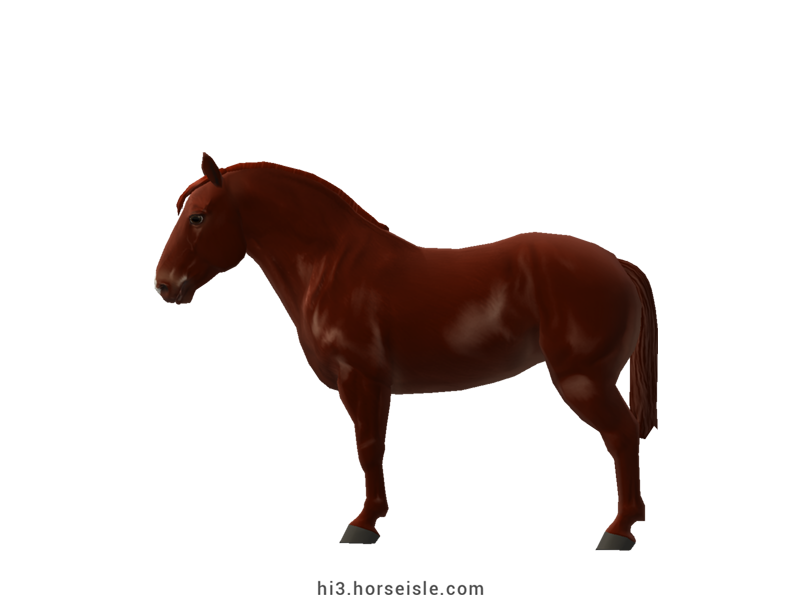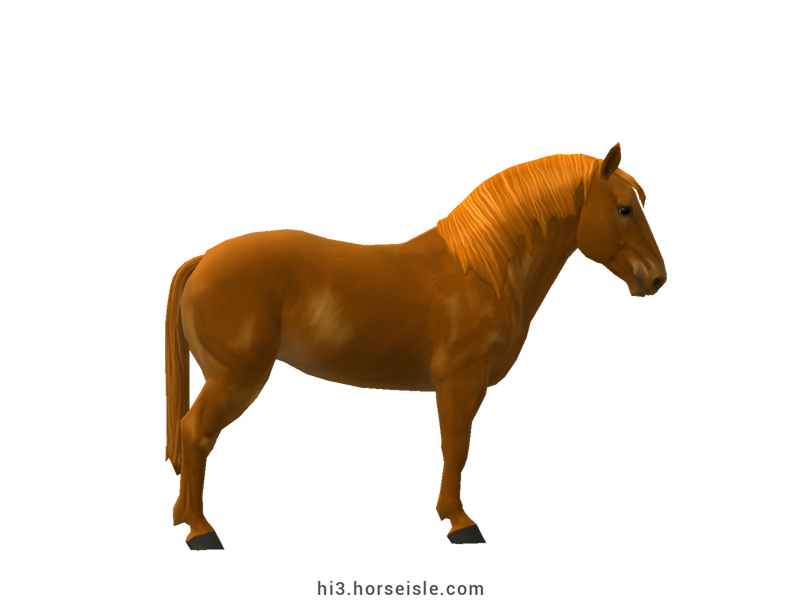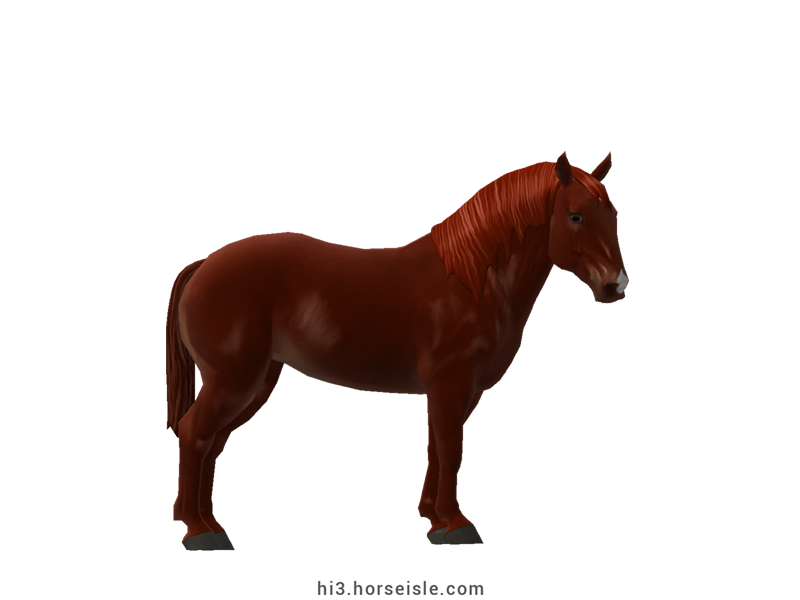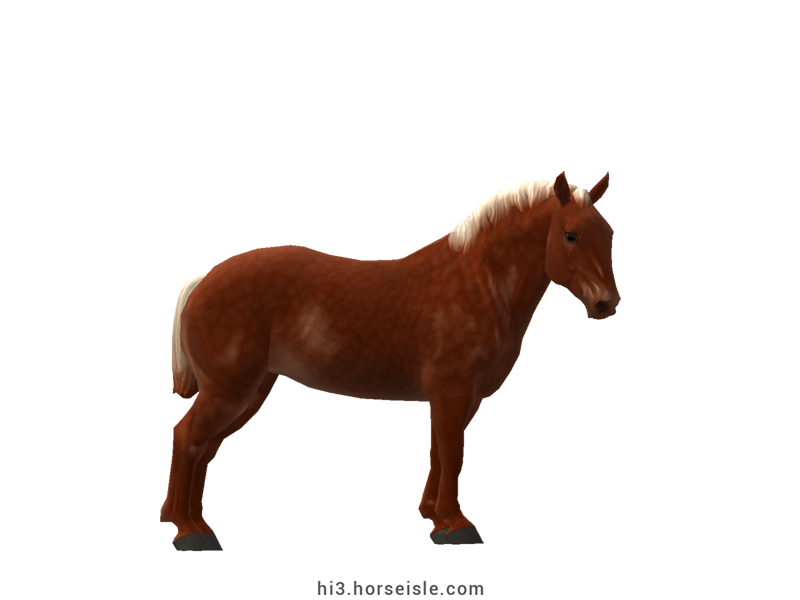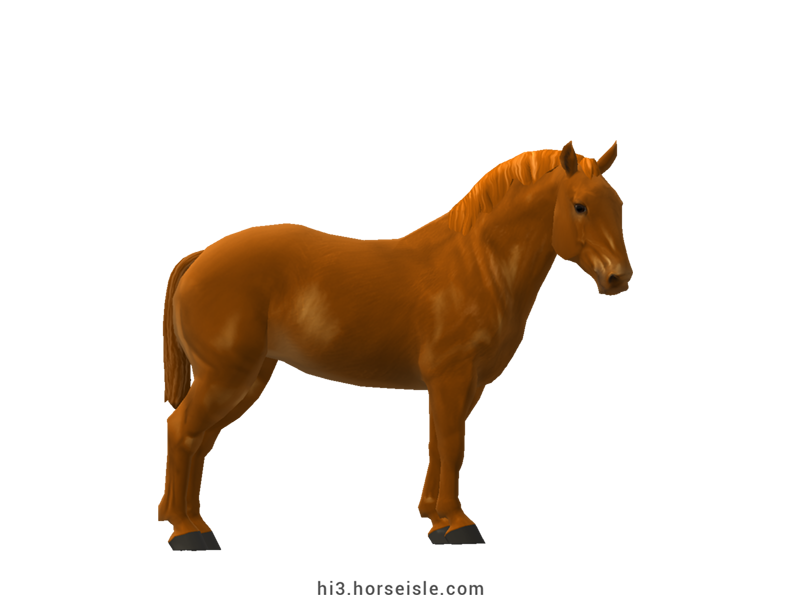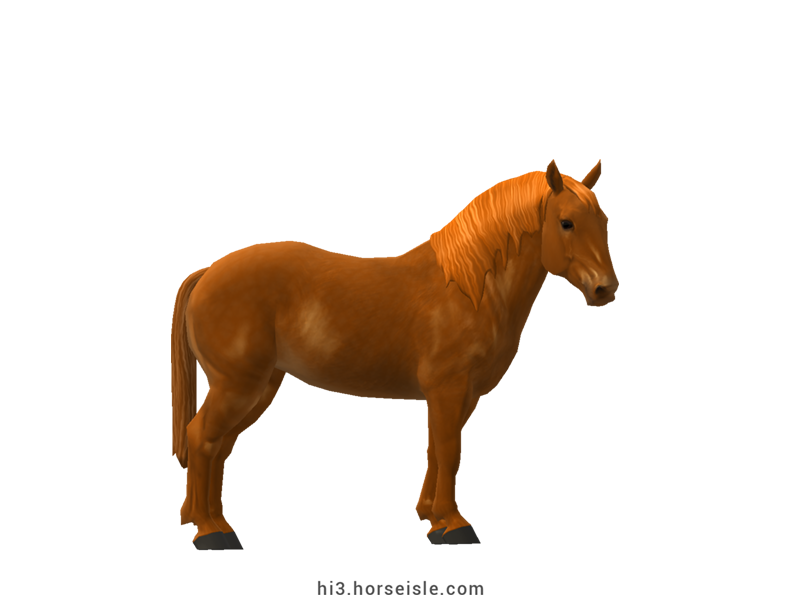Our Massive Real World Equine Reference!
[ INDEX ] Equine Type: Horse Breed: Suffolk Punch (Suffolk) [ PREV ] [ NEXT ]
The draft horse from Suffolk (and Norfolk):
Suffolk and Norfolk are two counties in East Anglia, named many centuries ago, after their location in relation to one another and their residents: South-folk at the south, and North-folk at the north.
The folks in both counties faced a problem: they needed a strong draft horse who could till the heavy clay soil of the local fields. The efforts to create such a horse began in the 16th century, and it is believed that by the end of that century the desired breed had roamed the two counties. It was later named Suffolk Punch.
Wait, Suffolk What?! What's with the Punch?
The name 'Suffolk Punch' has an interesting story on its own. While 'Suffolk' is after Suffolk where the breed originated, the 'Punch' changed meaning over the centuries.
Back in the 17th cetnury, one of the meanings of the word 'punch' was "fat and short". It was a shortened form of the word punchinello of the same meaning (year 1662). The draft horse from Suffolk was probably named 'punch' after his stout conformation (which he still has today).
In the 18th century, a new definition was added to the word 'punch'. According to Samuel Johnson's dictionary (1775), 'punch' meant "a horse that is well set and well knit, having a short back and thin shoulders, with a broad neck, and well lined with flesh."
Johnson's definition is a perfect description of the Suffolk Punch's conformation, suggesting the possibility that it was thanks to the Suffolk Punch's fame that the word 'punch' was now used to describe a particular type of horse. Alas, with no official records, we'll probably never know.
Today, the Suffolk Punch is the only breed named after its iconic conformation.
Crisp's Horse:
In 1768, a chestnut Suffolk Punch foal was born to a one Mr. Thomas Crisp who lived at the village of Ufford in east Suffolk. The foal grew up to be 15.2hh tall and became known as Crisp's Horse of Ufford. He also became the foundation sire of the modern Suffolk Punch.
But what is a 'modern' Sufflk Punch?
From an "ugly" beast to a handsome draft - the modern Suffolk Punch:
Originally, Suffolk Punches were bred to plough in heavy soil. While great attention was given to their strength, other aspects, such as appearance and gaits, were neglected. According to Arthur Young (agriculturist, born in 1741), during the 1750s the Suffolk Punch was:
"an uglier horse could not be viewed; sorrel-colour, very low in the fore-end, a large ill-shaped head with slouching heavy ears, a great carcass and short legs, but short backed and more of a punch... These horses could only walk and draw; they could trot no better than a cow. But their drawing power was very considerable."
During the 2nd half of the 18th century, there was a shift in breeding Suffolk Punches toward making them appropriate for field-work and carriage pulling. According to Arthur's writings (1797):
"Of late years by aiming at choach-horses the breed is much changed to a handsome, lighter and more active horse."
This depiction also sits with the account of Sir John Cullum (clergyman from Suffolk) who, in 1784, decribed the Suffolk Punches as:
"...about fifteen hand high... and to exhibit proofs of their great power, drawing matches are sometimes made... [about plouging] An acre of our strong wheat land, ploughed by a pair of them, in one day, and that not an unusual task, is an achievement that bespeaks their worth... [about carriage pulling] with the most spirited exertions... drawing my carriage up the rocky and precipitous roads..."
This handsome, lighter, yet strong form of the Suffolk Punch is what known as the modern Suffolk Punch, and the type that Crisp's Horse was the foundation sire of. Today, all existing Suffolk Punches trace back to him on their male lines.
The oldest British draft breed:
In 1877, the Suffolk Horse Society was born, making it the oldest horse breed registry in England, and the Suffolk Punch the oldest 'official' draft breed in the UK. In 1880, the first studbook was opened.
Suffolk Punches remained popular in England up until the 2nd half of the 20th century, when the mechanization of agriculture and transportation rendered them reduntant. It was only thanks to a few dedicated farmers that the oldest British draft breed didn't go extinct.
In the 1970s, the breed started to gain more attention and the demand for it increased, but it never regained its former popularity. Today, the Suffolk Punch is an endangered breed and is used for both draft work and recreational riding.
Conformation:
Suffolk Punches are known for their iconic, stouty conformation characterized by a massive neck and short legs.
The head is broad and has a straight profile, the neck is short and extremely muscular, slightly arched with great depth and a large crest, connecting high to smooth withers. The back is short, and the croup is rounded. The body is wide and extremely muscular.
The mane and tail are short to medium in length, and the legs have light feathering or lack it altogether.
Performance metrics:
The following are the: range, average, (SD), and MOE of performance metrics of ordered Suffolk Punches in Horse Isle (not bred ones). In rare cases, horses might have metrics outside of the range. Breeders can produce horses beyond this range.
Speed: 14.7-16.0, 15.4 (0.3), 0.05.
Sprint: 49-63, 56 (2), 0.49.
Accel: 0.83-1.01, 0.91 (0.04), 0.01.
Decel: 1.05-1.20, 1.13 (0.04), 0.01.
Jump: 4.88-5.18, 5.02 (0.07), 0.01.
Pull: 3.90-4.62, 4.24 (0.17), 0.03.
Turning: 49.45-60.24, 54.95 (2.66), 0.52.
Reverse: 2.3-2.8, 2.6 (0.1), 0.02.
Stamina: 54.83-60.48, 57.31 (1.19), 0.23.
Reaction: 0.78-0.87, 0.83 (0.02), 0.00.
Coats & Height:
Coat: always chestnut, can be flaxen or sooty.
Pattern & markings: coat is always solid. White markings can occur on the face and legs but are relatively small in size.
* no brindle.
Height: 15.3hh to 17.2hh.
[ INDEX ] [ PREV ] [ NEXT ]

